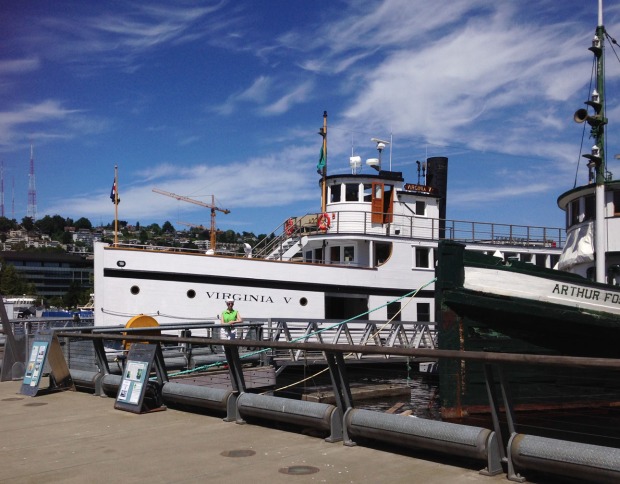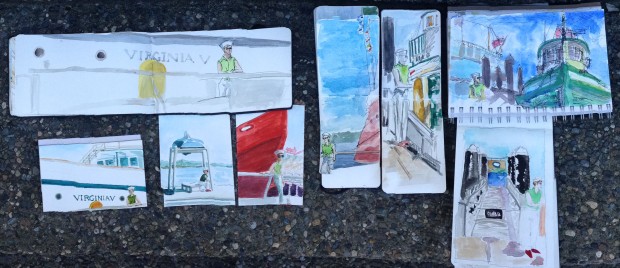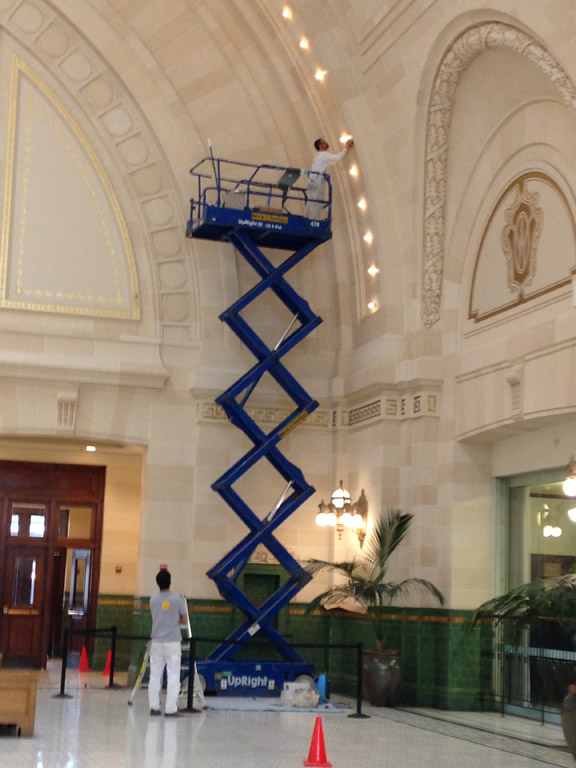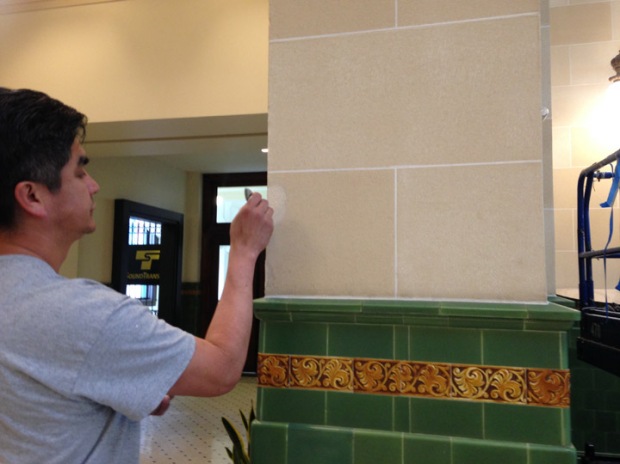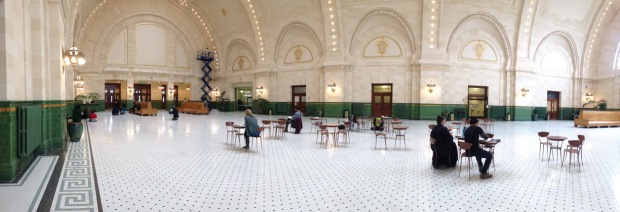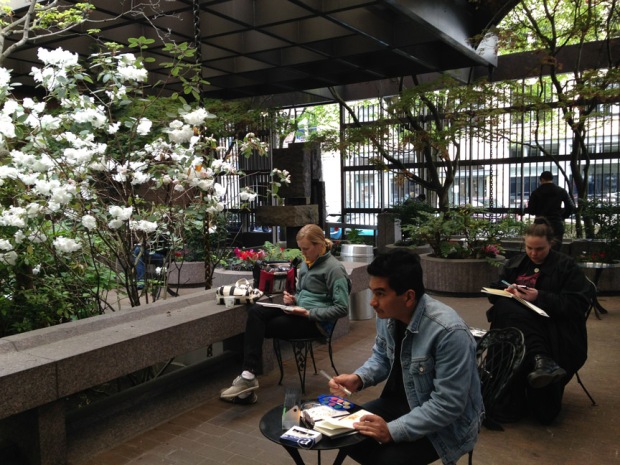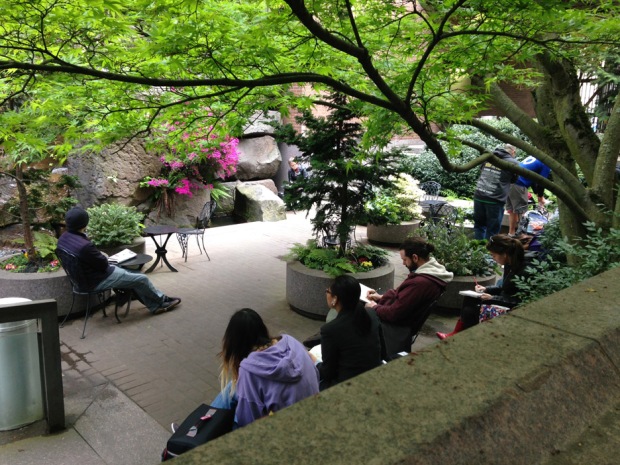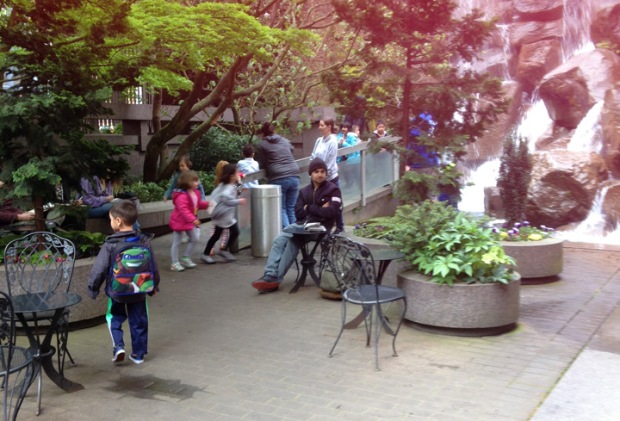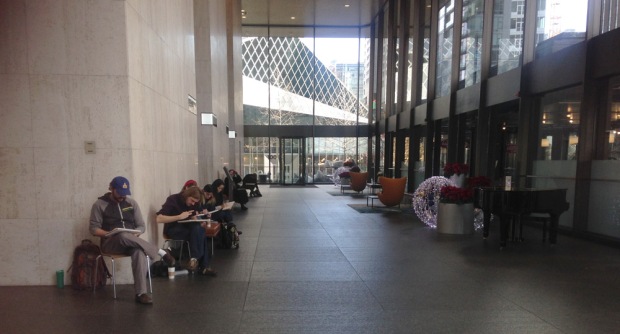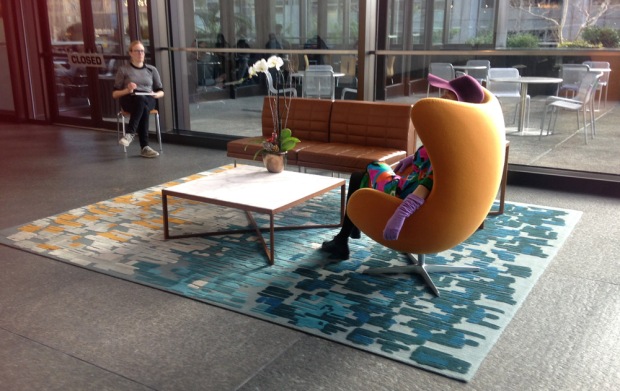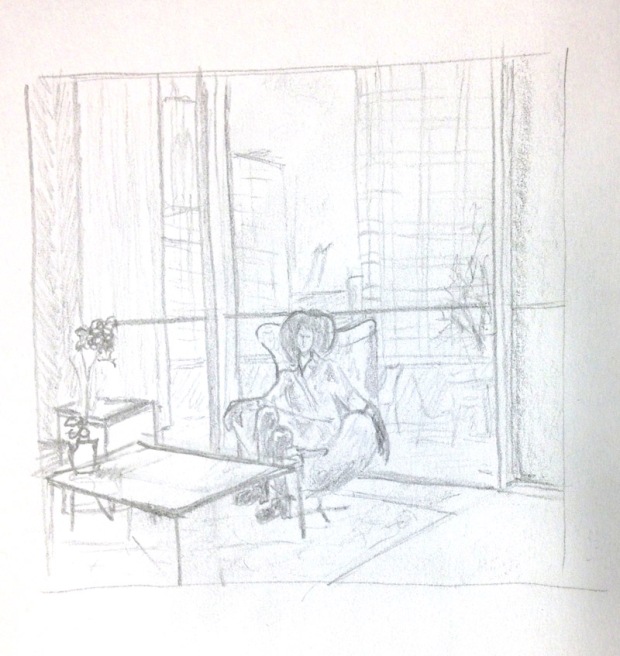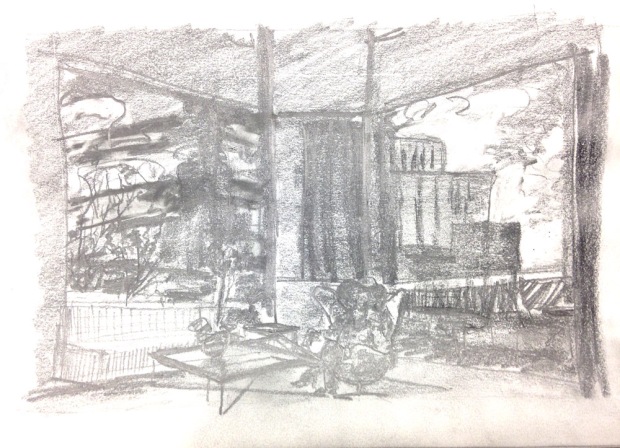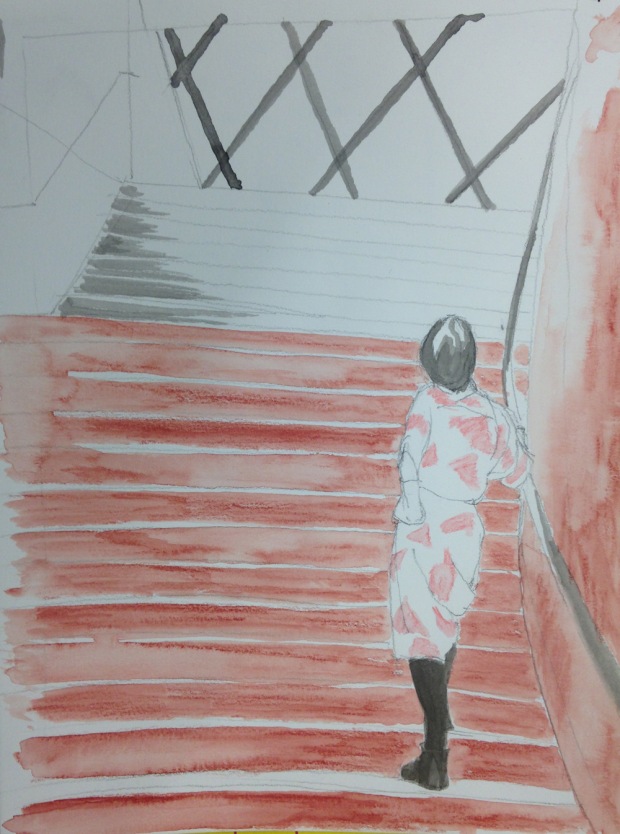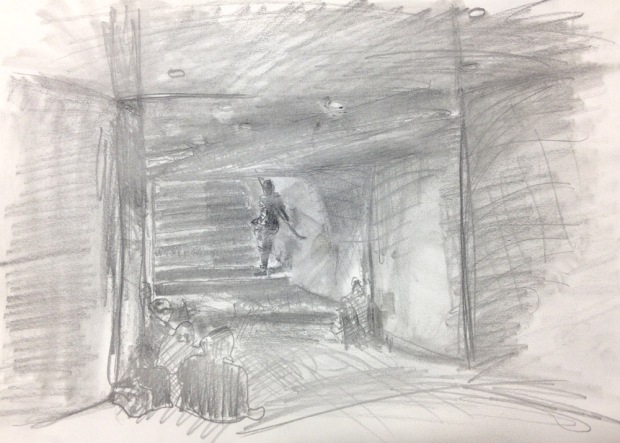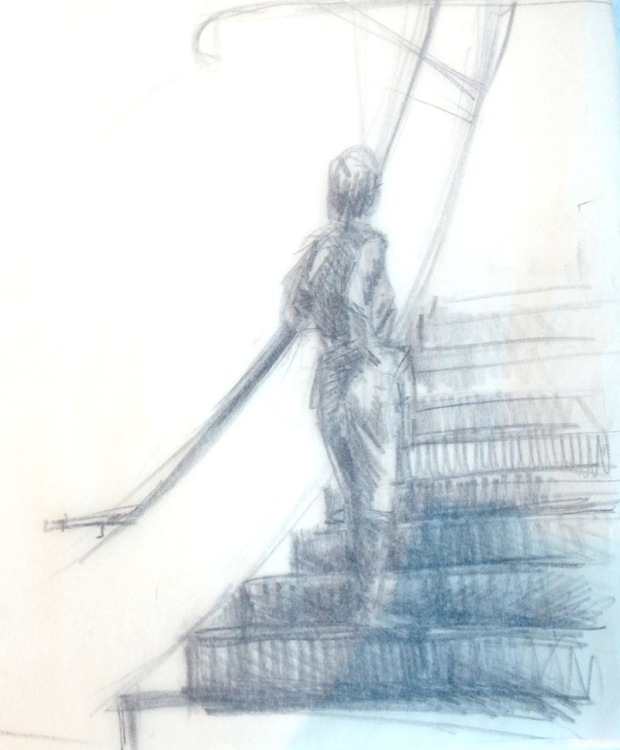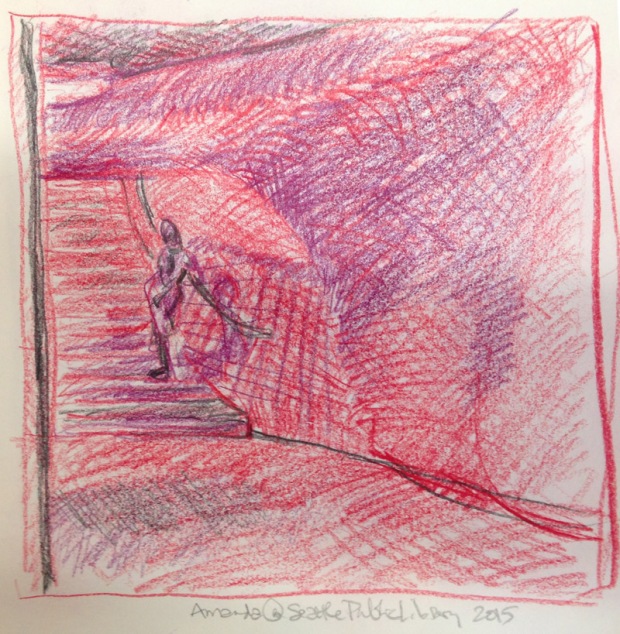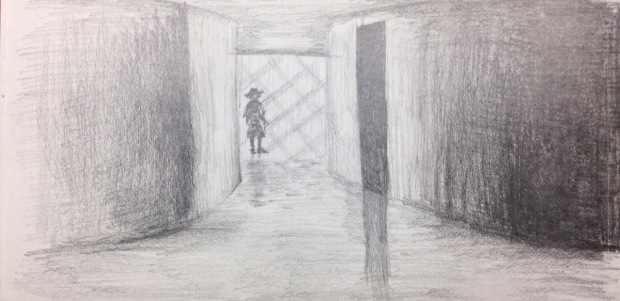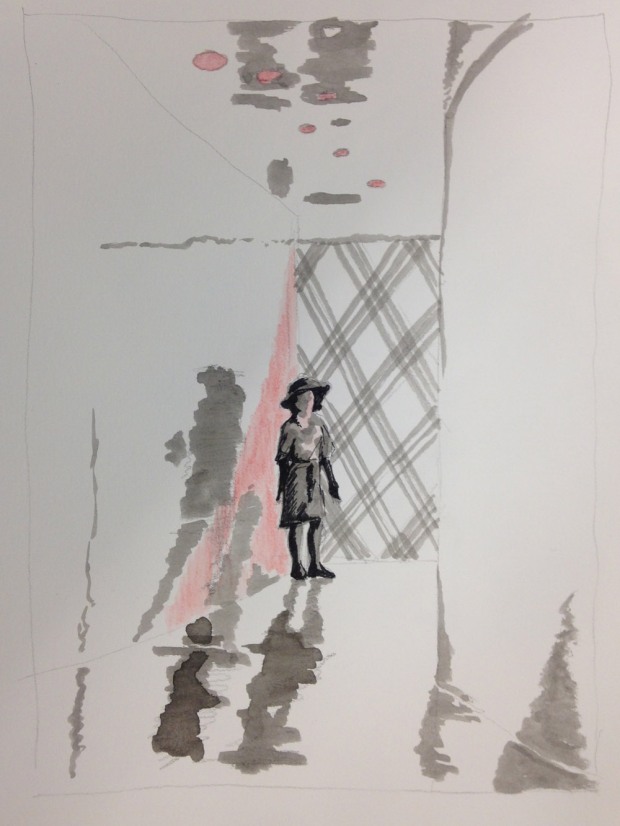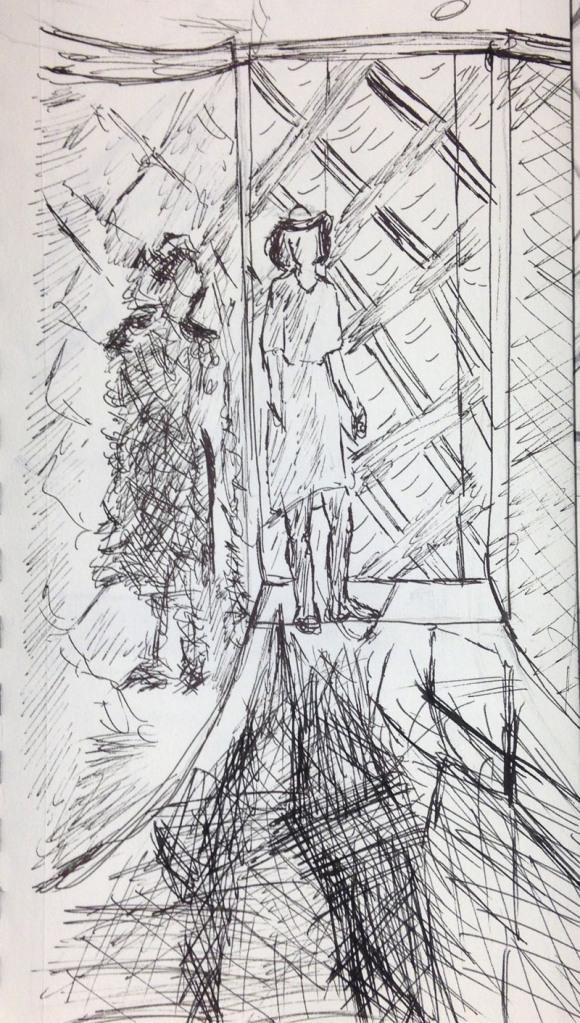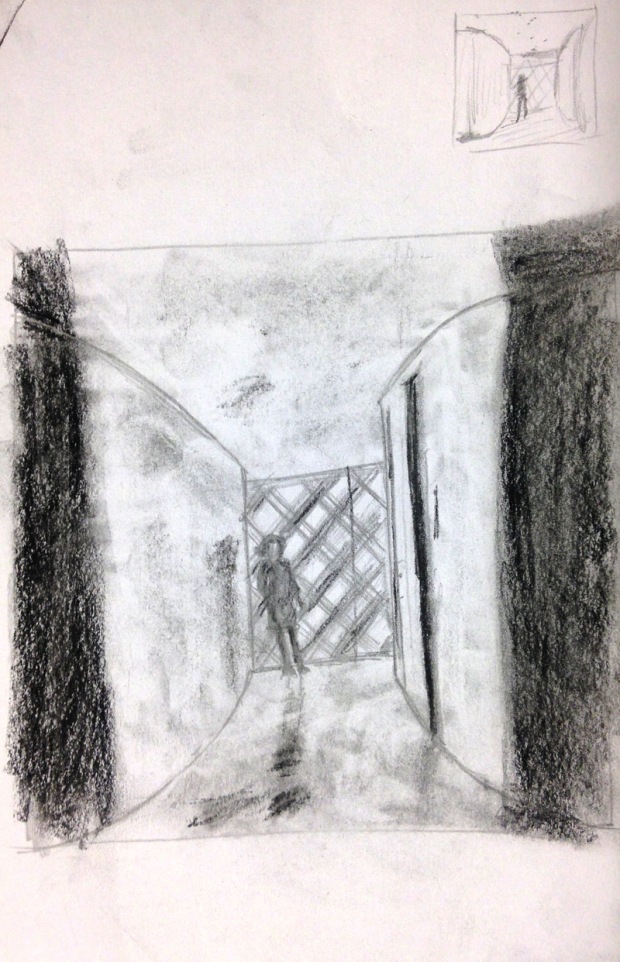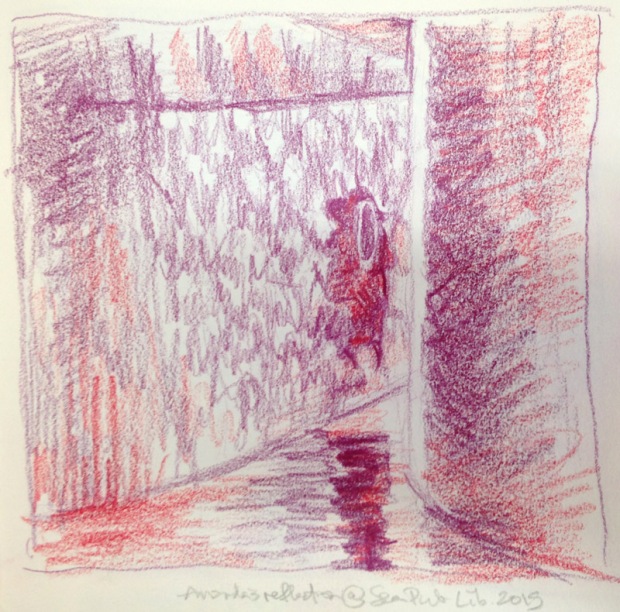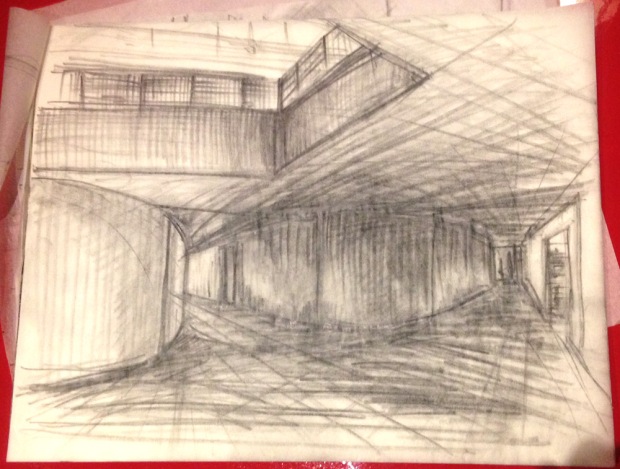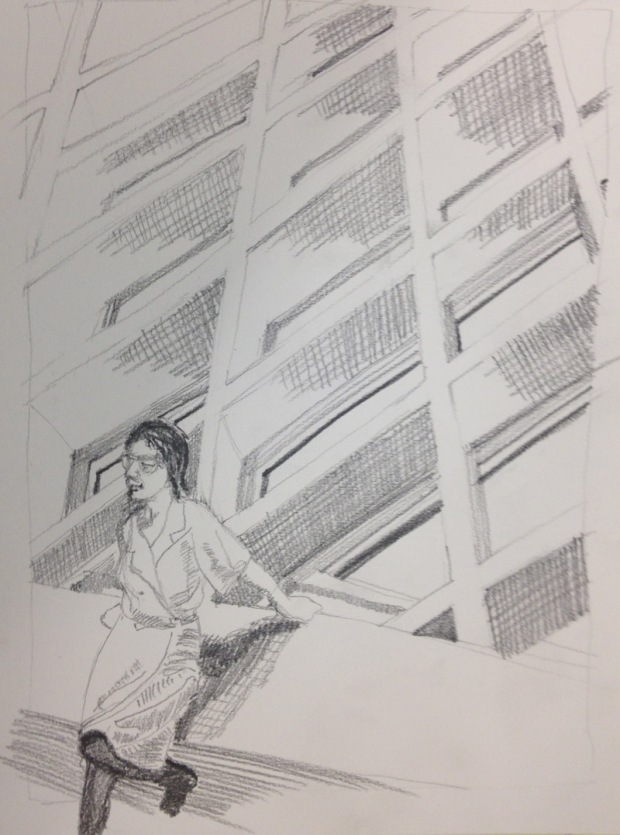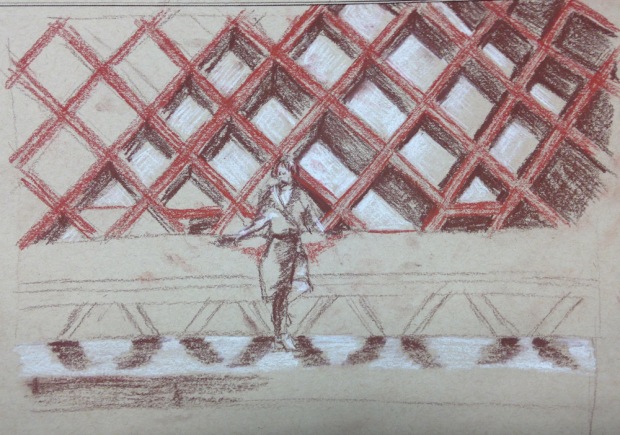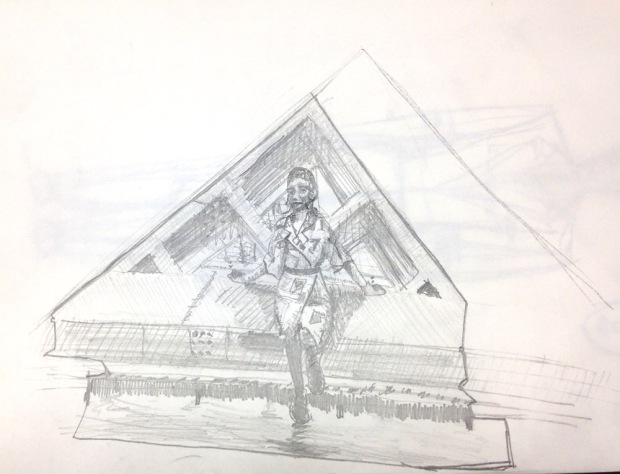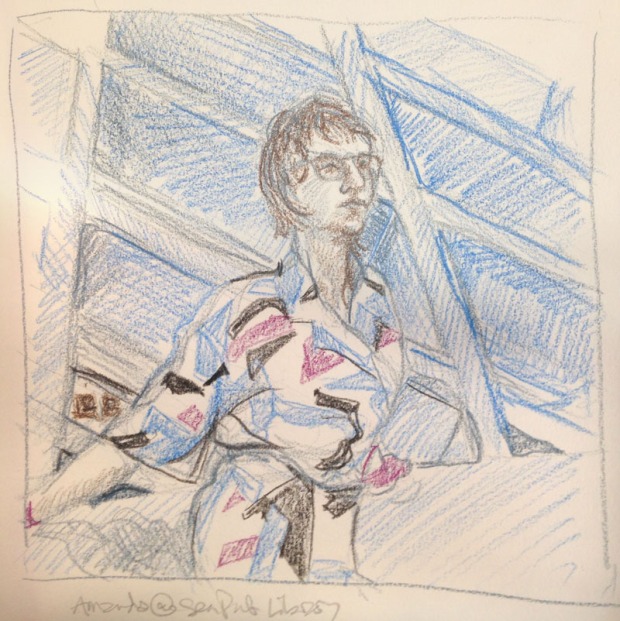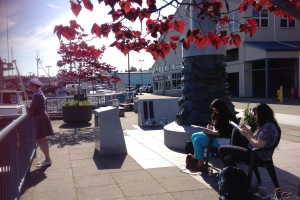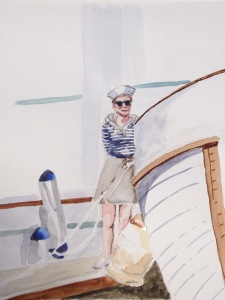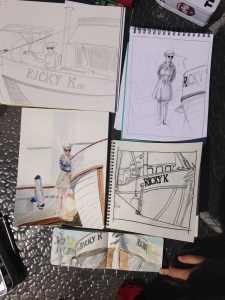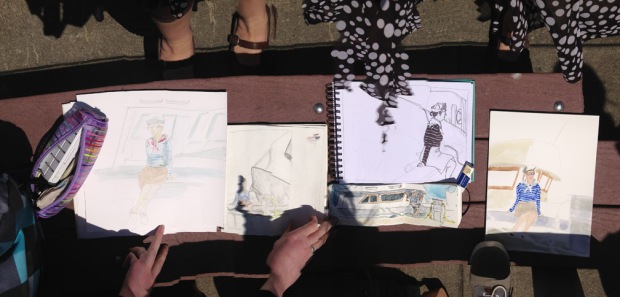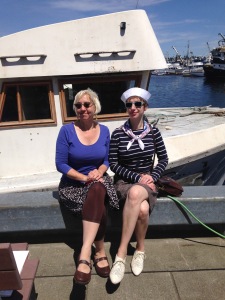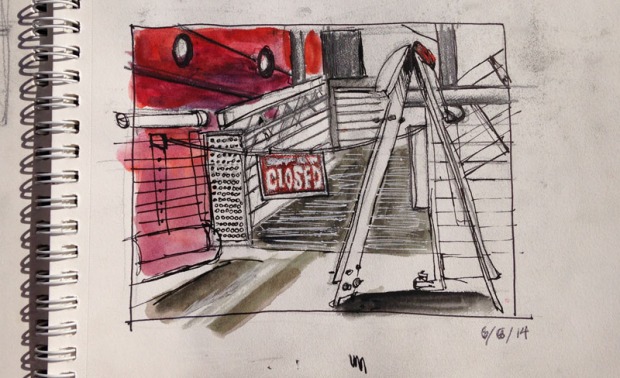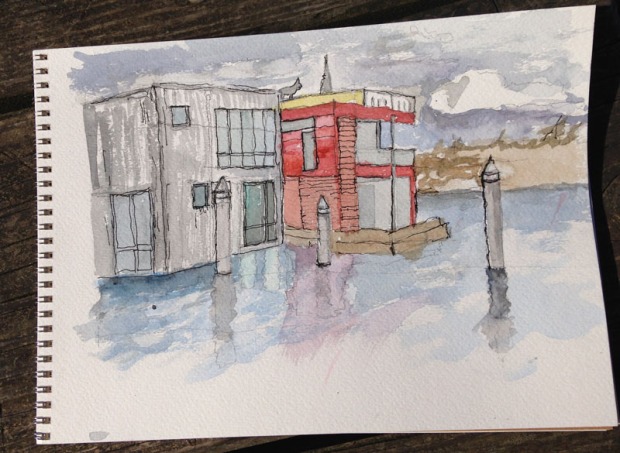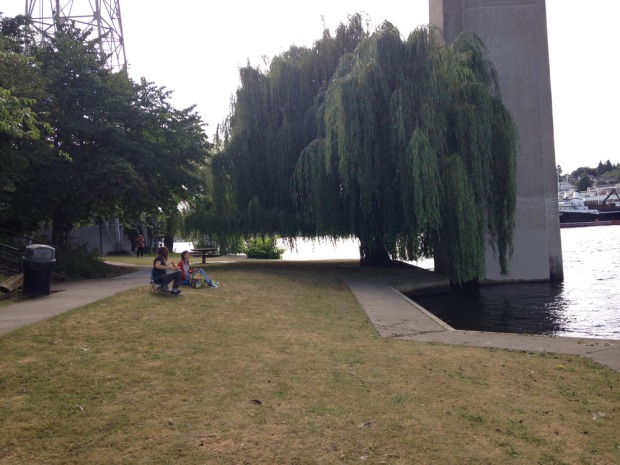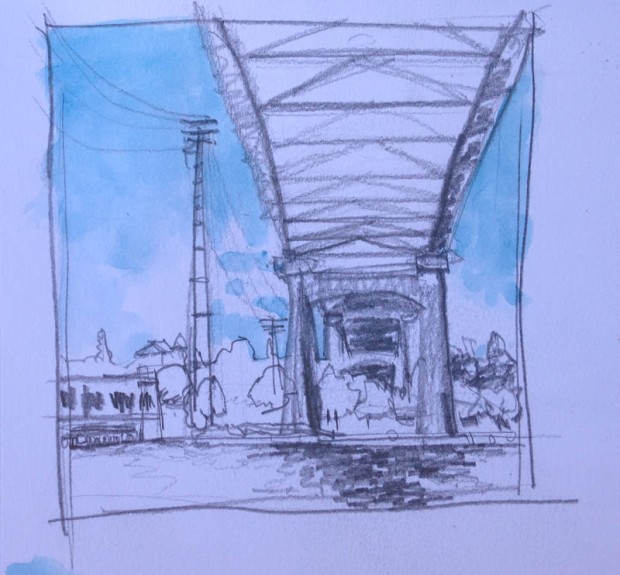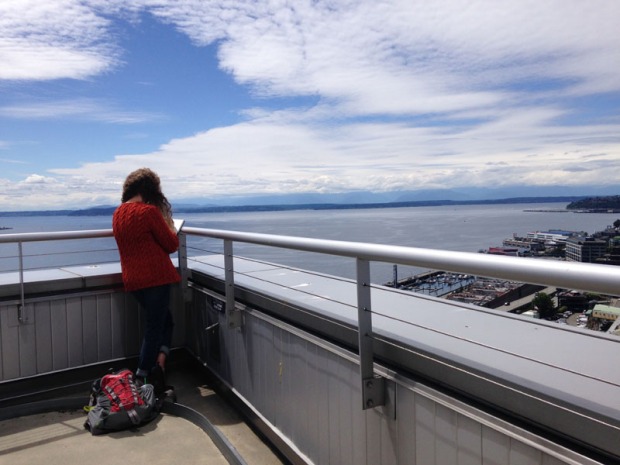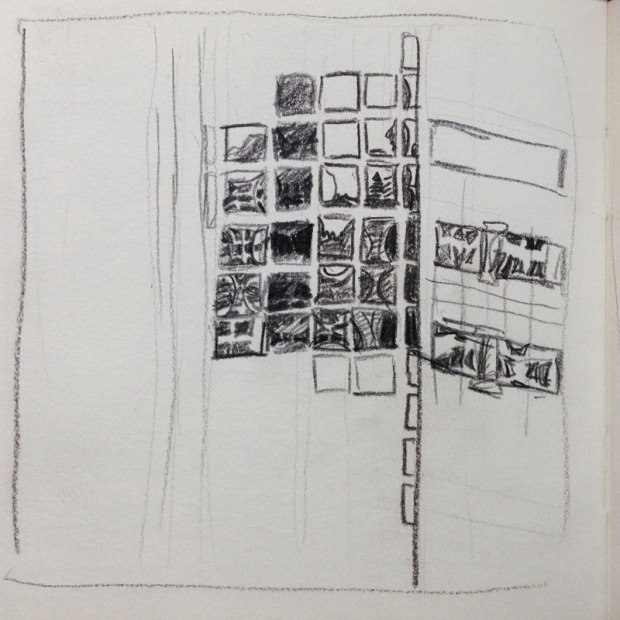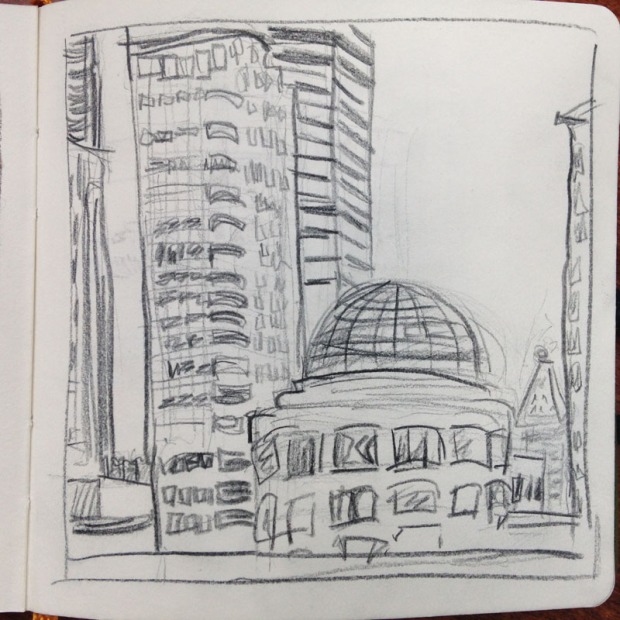This spring my University of Washington drama grads and I went on a whopping five field trips around town. Seattle abounds in outrageously draw-able scenery, even more so if you explore past the typical tourist sites and find those gems that are hidden in plain sight. Since this is a life drawing class, we are always accompanied by one of our fantastic models, who enjoy showing up in outfits apropos of the location. Drawing the model on location puts the life back into life drawing. Advanced students need the additional challenge of spatial relationships, scale, and changing lighting, but beginners respond well to the change of scene, too.
 A day intended to be spent in Freeway Park was too chilly and rainy to hang around outside, so we moved indoors to the nearby Washington State Convention Center. It’s a public facility with lots of tables and chairs, very convenient for drawing, looking (to me at least) as if it were intended for that purpose. Suspended above the freeway on the third floor, surrounded by skyscrapers, the model seemed to be in an abstract environment that isn’t immediately discernible in the drawings. It’s a little disconcerting how outdoor space bumps up visually against indoor space, with unexpected vertiginous elevation changes. Kind of like an avant-garde stage set.
A day intended to be spent in Freeway Park was too chilly and rainy to hang around outside, so we moved indoors to the nearby Washington State Convention Center. It’s a public facility with lots of tables and chairs, very convenient for drawing, looking (to me at least) as if it were intended for that purpose. Suspended above the freeway on the third floor, surrounded by skyscrapers, the model seemed to be in an abstract environment that isn’t immediately discernible in the drawings. It’s a little disconcerting how outdoor space bumps up visually against indoor space, with unexpected vertiginous elevation changes. Kind of like an avant-garde stage set.
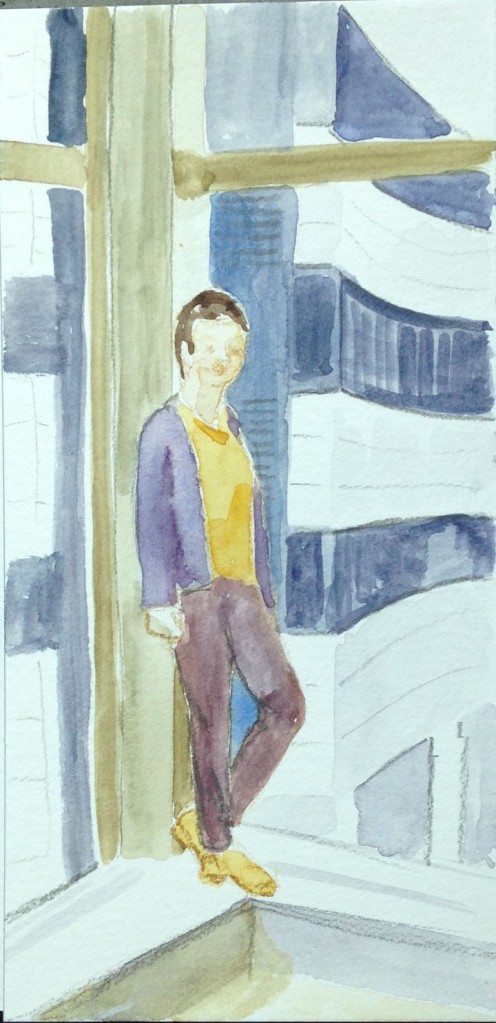
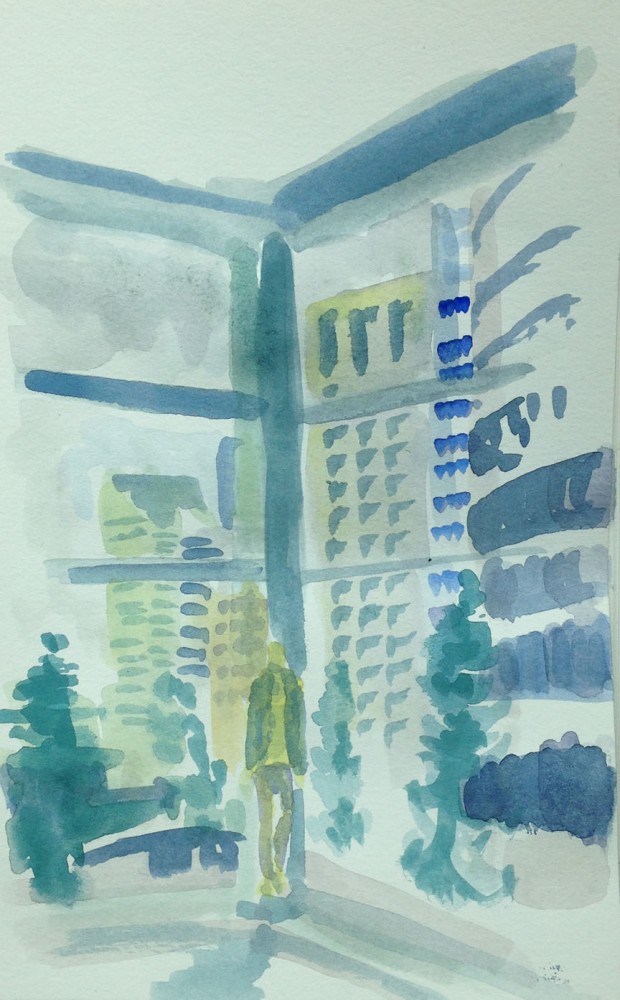
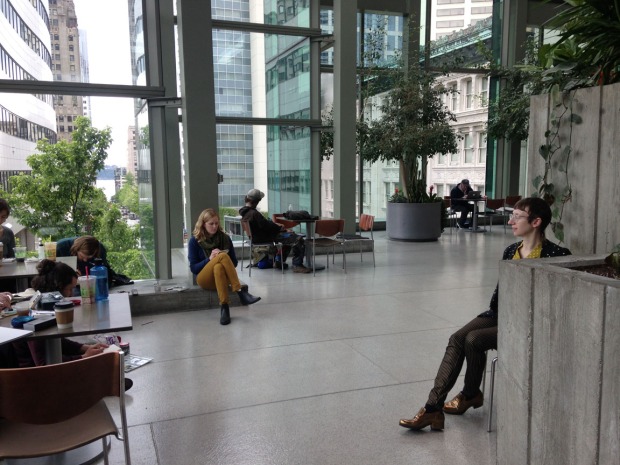
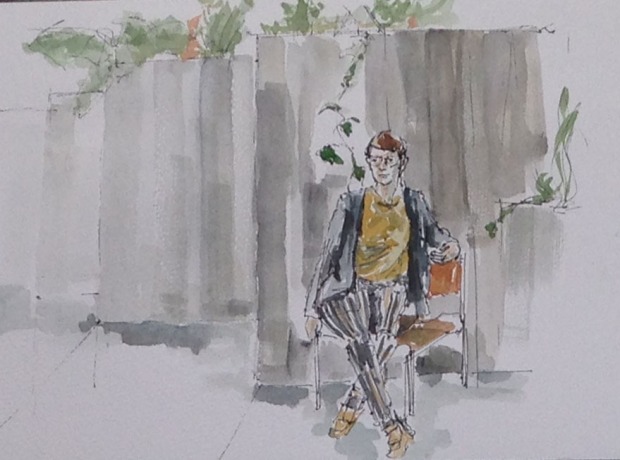 The concrete forms (which abound in the park next door) have a sort of soviet-union feel to them, something the workers might spend their allotted leisure time picnicking on. Present-day capitalist workers enjoy a smoke beneath us.
The concrete forms (which abound in the park next door) have a sort of soviet-union feel to them, something the workers might spend their allotted leisure time picnicking on. Present-day capitalist workers enjoy a smoke beneath us.
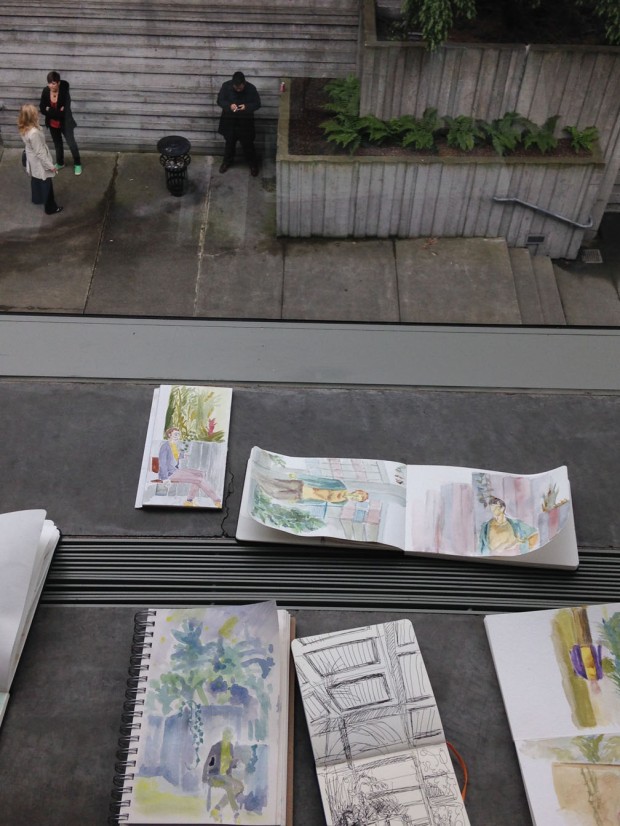 The weather was more cooperative a few weeks later for our trip to Seattle Center. Home of the iconic Space Needle, it also has lots of interesting courtyards tucked away on its mid-century futuristic grounds. The International Fountain is a favorite hangout of locals, but we got there in the morning before it was overrun by children (or even water).
The weather was more cooperative a few weeks later for our trip to Seattle Center. Home of the iconic Space Needle, it also has lots of interesting courtyards tucked away on its mid-century futuristic grounds. The International Fountain is a favorite hangout of locals, but we got there in the morning before it was overrun by children (or even water).
A much smaller fountain and wading pool is hidden around the corner, surrounded by Flintstonesque walls and dotted with big flat rocks. As with the other fountain, one should get there before the kids for ideal (and dry) drawing conditions.
A few weeks later, we were back to shivering again, downtown at the Harbor Steps, another great public space and exercise in three-point perspective. When we got too cold, we ducked into the Seattle Art Museum for warmth, where we drew, and even painted, unmolested in the lobby.
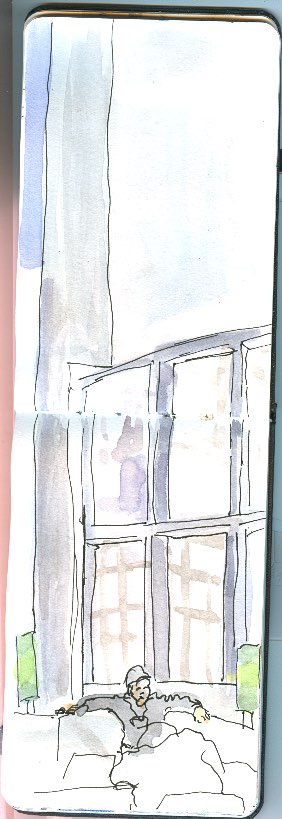 But wait! What’s that bright yellow thing outside the window? The sun! Time to go back outside . . . to a top-secret location on the scenic and underused roof of a nearby office building, where it is also apparently acceptable to draw and paint.
But wait! What’s that bright yellow thing outside the window? The sun! Time to go back outside . . . to a top-secret location on the scenic and underused roof of a nearby office building, where it is also apparently acceptable to draw and paint.
 The following week it was unambiguously sunny for our final class, which was spent at the Center for Wooden Boats in South Lake Union Park. The setting is almost like a mini-landscape lesson, with the horizon line conveniently delineated along the other side of Lake Union, nearby large ships looming red in the foreground, and distant trees receding into handy bluish atmospheric perspective. Flat lawns, water reflections, even a shady side of the building for when it gets too hot. Amanda looked so authoritative in her nautical garb, some tourists asked for information while she modeled.
The following week it was unambiguously sunny for our final class, which was spent at the Center for Wooden Boats in South Lake Union Park. The setting is almost like a mini-landscape lesson, with the horizon line conveniently delineated along the other side of Lake Union, nearby large ships looming red in the foreground, and distant trees receding into handy bluish atmospheric perspective. Flat lawns, water reflections, even a shady side of the building for when it gets too hot. Amanda looked so authoritative in her nautical garb, some tourists asked for information while she modeled.




